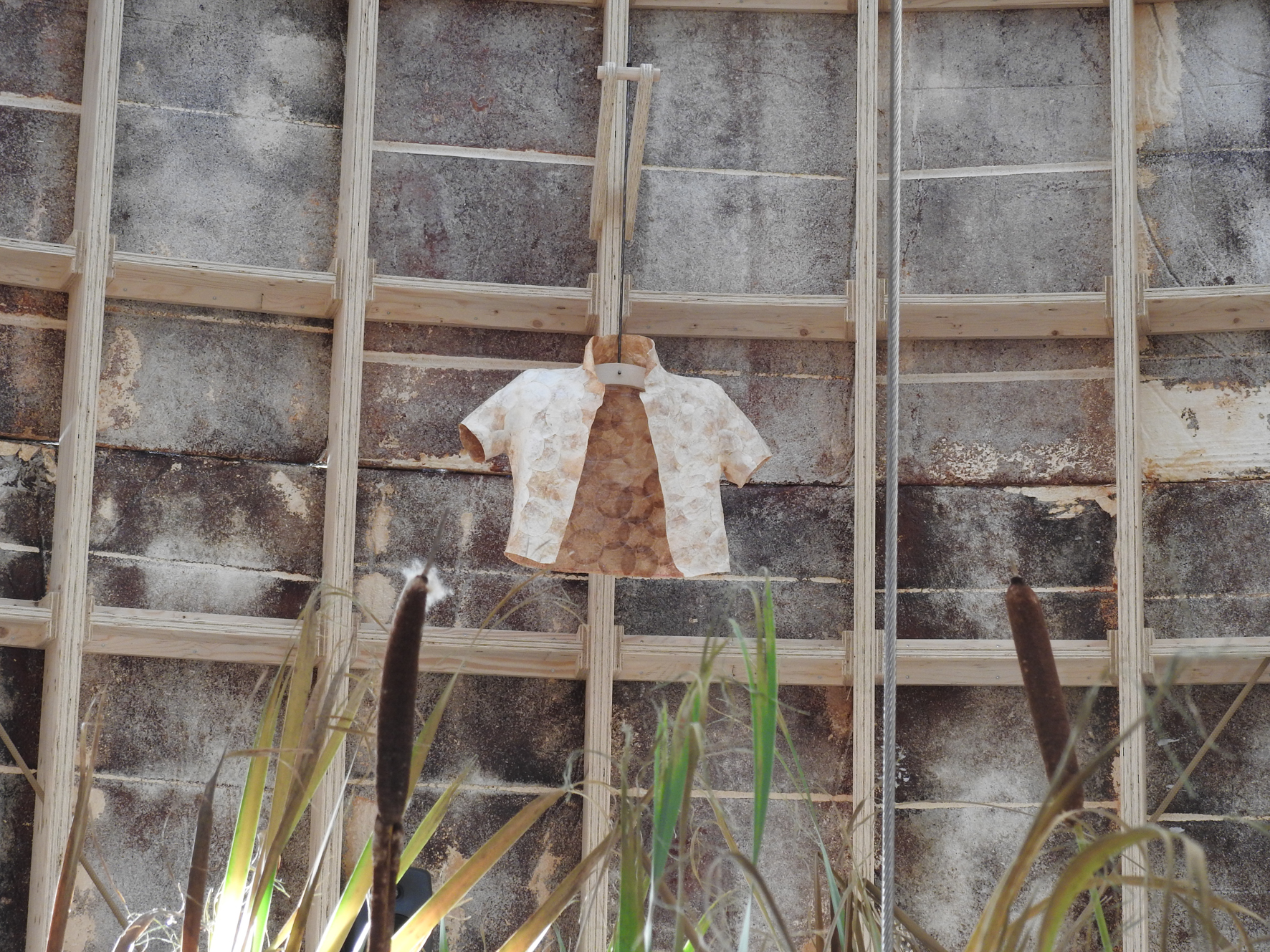During the Dutch Design Week Designer of The Growing Pavilion Pascal Leboucq was also the curator of the Growing Pavilion Exhibition. He gave both emerging and established biobased designers a platform to inspire visitors. In the world of fashion and design, biobased designers flourish with pieces of furniture, rugs, lamps and other objects. Even after the DDW, the pavilion remains a place where designers have a place to show the beauty of their experiments.
Diana Scherer – Rootbound 2
Scherer is a visual artist living and working in Amsterdam. Her practice encompasses photography, material research, plant root-weaving and sculpture. She explores the relationship of man versus his natural environment and his desire to control nature, with a focus on the dynamics of belowground plant parts. The project ‘Interwoven‘ originated as an art project with an intuitive approach and developed into innovative material research. Working on this project Scherer shifts between disciplines, from design to art, craft and science, while collaborating with biologists, engineers and designers to make her visions come to life.
Eric Klarenbeek – Van wier tot waar
Klarenbeek & Dros designed a Seaweed Cabinet in collaboration with the Dutch interior design brand Zuiver. The air filtered seaweed was cultivated by the NIOZ Research Institute and placed in a cabinet made out of locally grown kelp algae. The Klarenbeek & Dros duo creates new designs and materials made out of seaweed from the North Sea. In October 2018 they won the “New Material Award” with their five-year research into biopolymers from algae and seaweed. Seaweed captures a lot of CO2 during its growth process and the end product is recyclable, compostable and circular. This makes the material an alternative to non-degradable plastics from raw, fossil materials. The seaweed in the aquarium serves as a food source and as an air filter. While capturing the CO2, it converts it into oxygen and transforms it into new, edible algae.
Martijn Straatman – Manureality 1.0 / Manureality 2.0
Straatman believes that to become more sustainable in the future, we must go back to the basics and return to a more primitive way of living. His collection is based on the use of ‘Manureality‘, an old-fashioned and forgotten building material made from horse manure. In many parts of the world, such as Africa, South-America and Asia it is still used as fuel, isolation and as a construction material. Through ‘Manureality’ Straatman aims to spread awareness of the potential uses of daily waste, even in cases when it might seem unusable and dirty. Another goal of this collection is to set an example and start a conversation about how to create a more sustainable future
Christien Meindertsma – Flax Chair
Meindertsma seeks to reveal processes that have become distant in industrialization and encourages a deeper understanding of the materials and products that surround us. The Flax Chair is made of new composite material, created using four layers of an existing woven flax textile and five layers of a newly developed dry needle felted flax. The woven linen and PLA (a biodegradable plastic) textile use long flax fibres whilst the felted flax material provides texture. The soft pile of fabrics is heat pressed, melting the flax and PLA into the shape of a rigid chair. The ambition for Meindertsma was to make an affordable, scalable, environmentally friendly, locally made product whilst exploring a new production process.
https://christienmeindertsma.com/
Aniela Hoitink – Living skin
Hoitink investigates and develops new ‘living’ materials for the transition to a sustainable fashion system and a circular society. Through different lab projects, she develops new, sustainable materials – specifically in the field of fashion and design. Her goal is to reach a new set of imagination and aesthetics, which are essential for the transition to a circular economy and society. In the context of all social, environmental, economic and political problems of the current fashion industry, there is a great urgency to deal more ethically with (raw) materials and to question their value and meaning.‘Living Skin’ focuses on the ‘behaviour’ of new materials such as mycelium, kombucha and algae when worn on the skin of the human body, and the personalization of these materials. It is made from mycelium paths, grown together on a 3D model.
HuisVeendam – Biolaminates Cattail
HuisVeendam is an innovative company that manufactures decorative sheet panelling. The strength of their creations lies in the story behind the fibres they use. They upgrade fibres wrongly perceived as waste, revealing the link with their origin and region, while stimulating the subconscious recognition of colour, scent and shape. Tjeerd Veenhoven built and designed the floor of The Growing Pavilion, together with most furniture pieces displayed. Made entirely out of cattail harvested in Groningen, the warmth and rich content of those bio-laminates are as intense as their visual beauty. The development of environmentally sustainable alternatives is currently essential for our planet. With this idea in mind and with their ecological knowledge and analysis, HuisVeendan aims to contribute to a more sustainable future.

